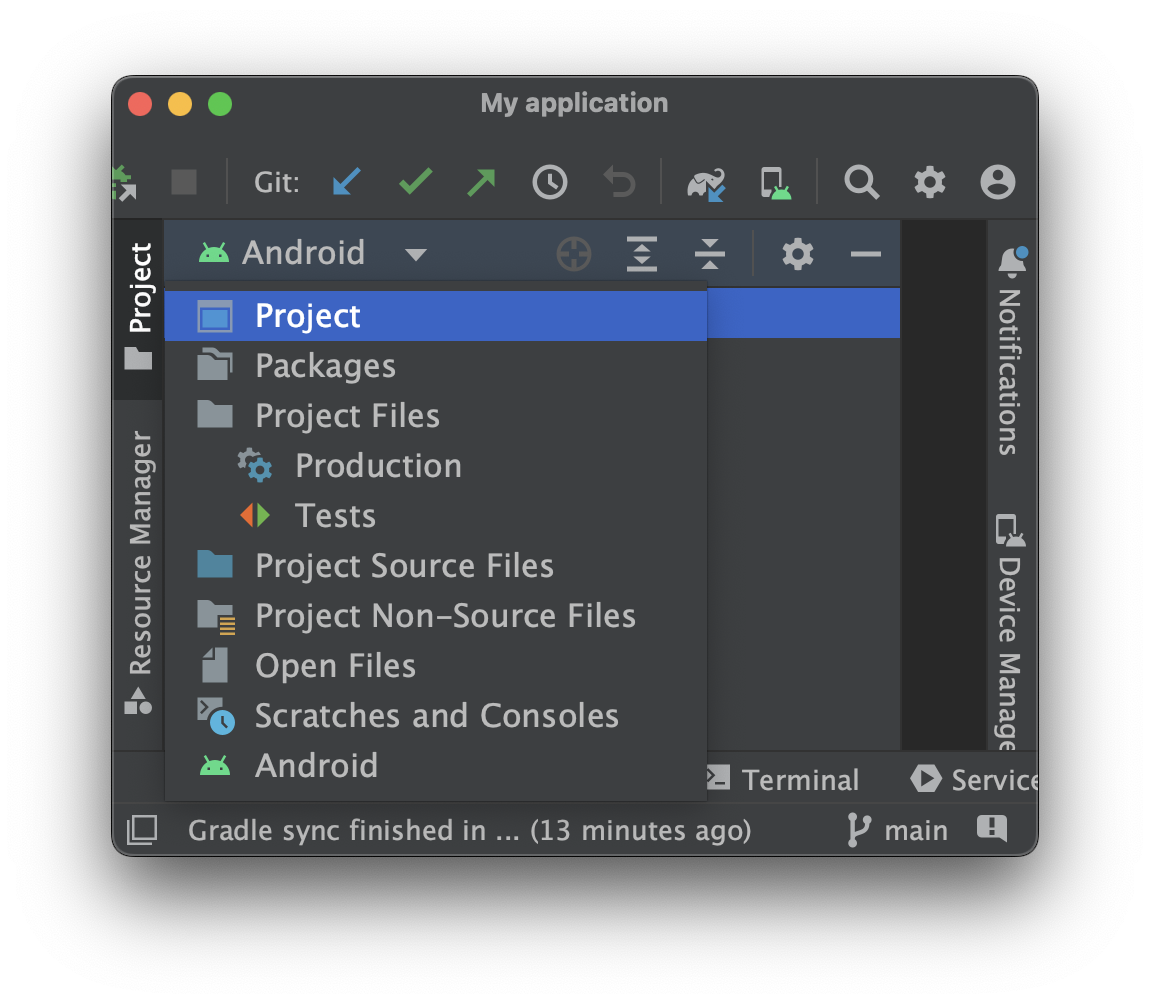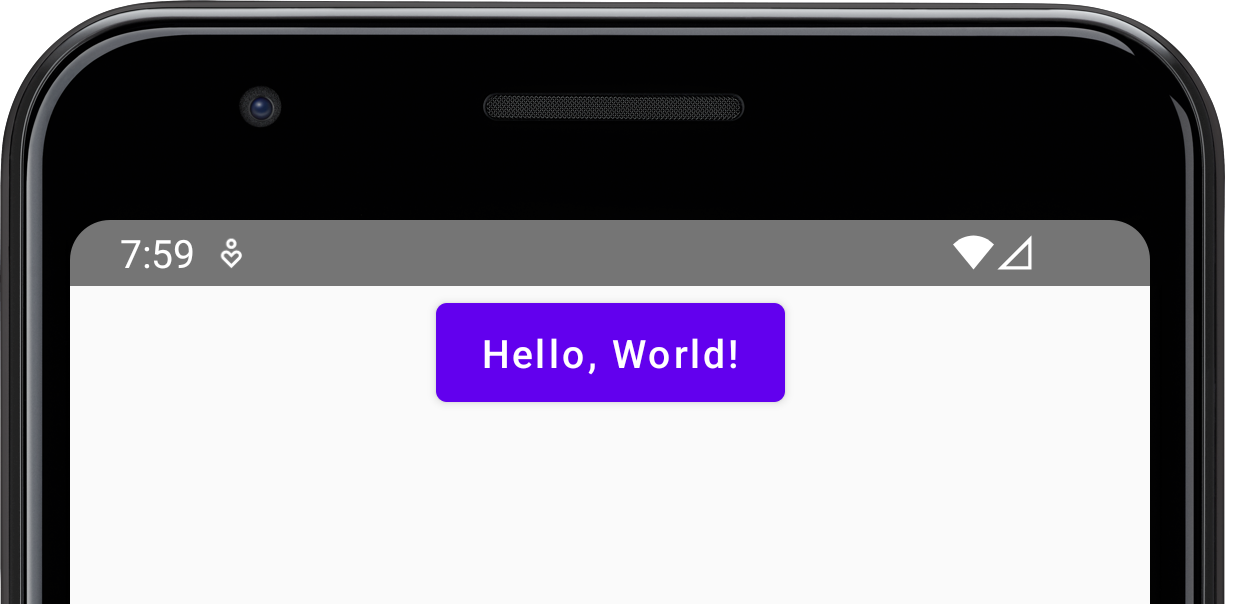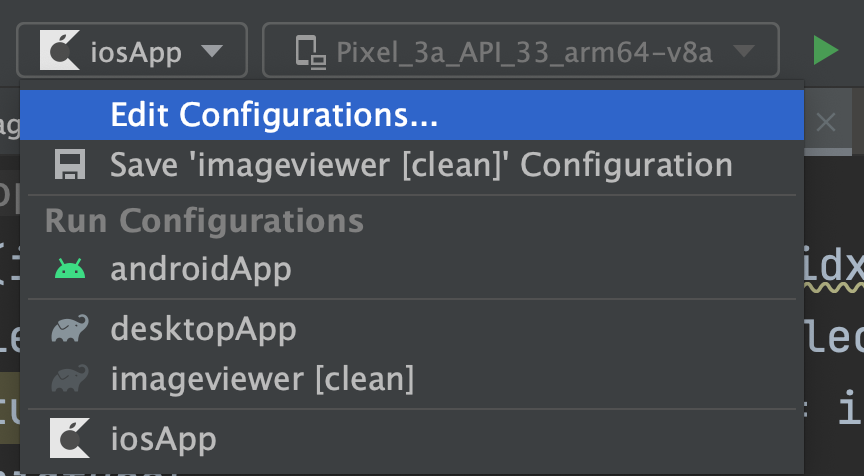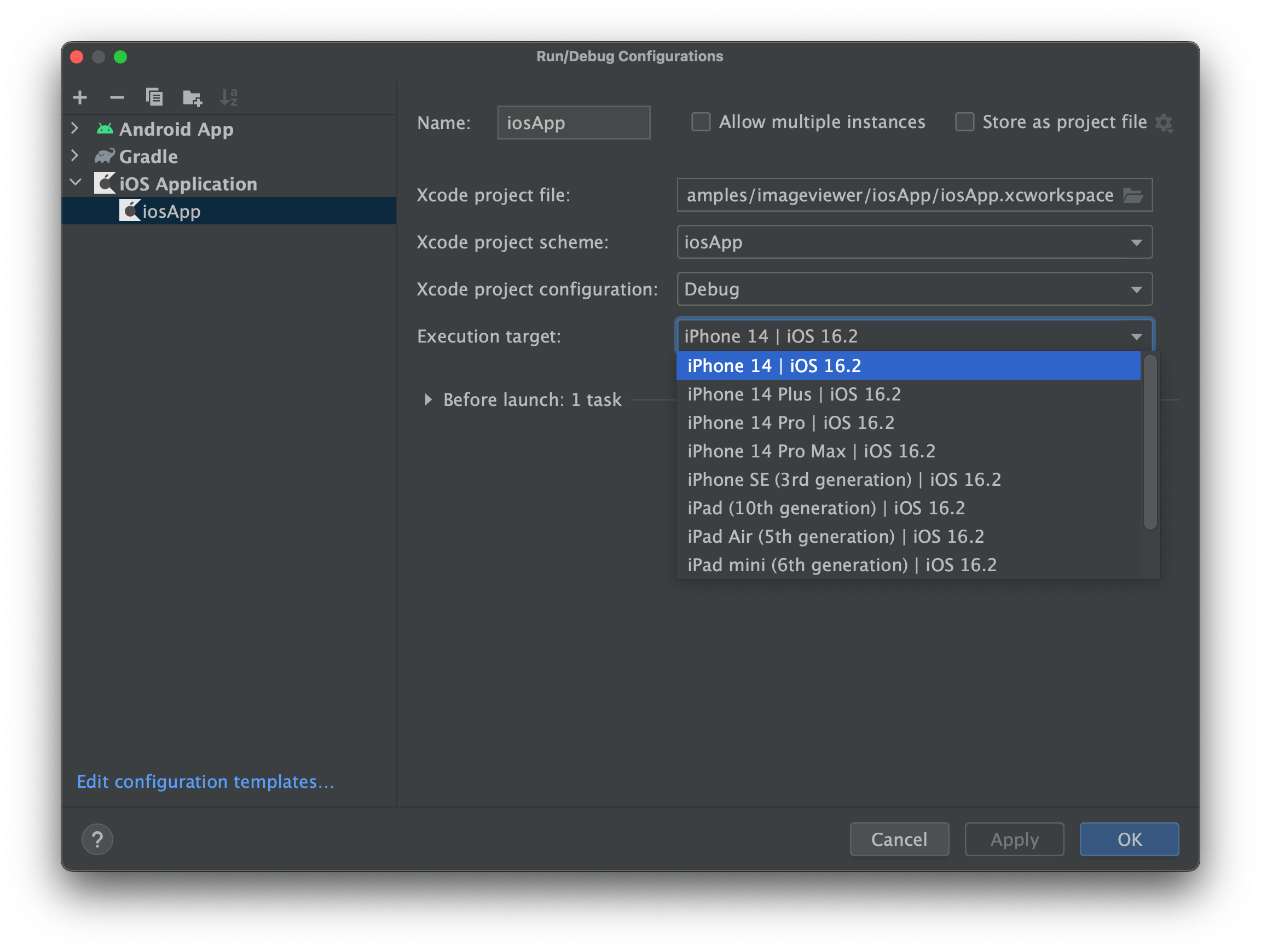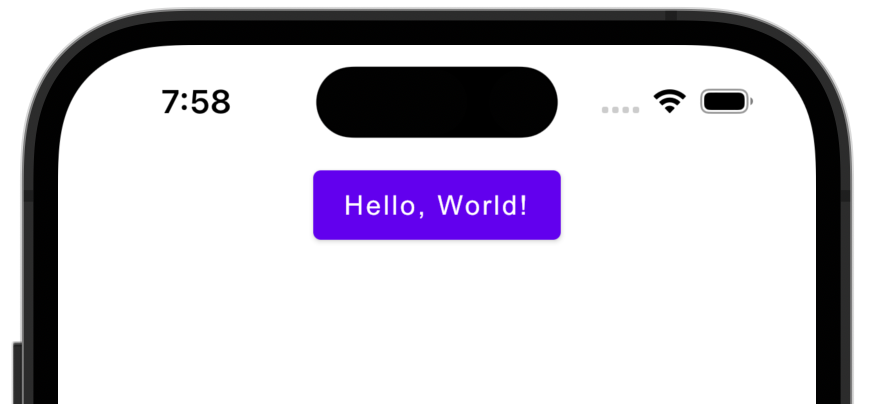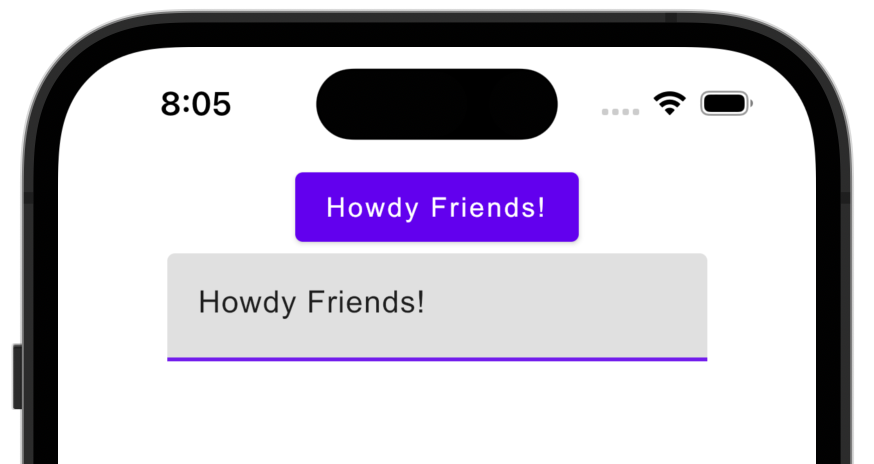Compose Multiplatform Application
Use this template to start developing your own Compose Multiplatform application targeting Desktop, Android, and iOS (Alpha).
Your Compose Multiplatform application targeting Desktop, Android and iOS is a Kotlin Multiplatform project. Let's make sure you have set up your environment for mobile development with Kotlin Multiplatform.
Warning Writing and running iOS-specific code for a simulated or real device requires macOS. This is an Apple limitation.
To work with this template, you will need:
- A machine running a recent version of macOS
- Xcode
- Android Studio
- Kotlin Multiplatform Mobile plugin
- CocoaPods
Before opening the project in Android Studio, use kdoctor to ensure your development environment is configured correctly. Install kdoctor via brew:
brew install kdoctor
Then, run kdoctor from your terminal. If everything is set up correctly, you should see valid output. Otherwise, kdoctor will provide you which parts of your setup still need configuration:
Environment diagnose (to see all details, use -v option):
[✓] Operation System
[✓] Java
[✓] Android Studio
[✓] Xcode
[✓] Cocoapods
Conclusion:
✓ Your system is ready for Kotlin Multiplatform Mobile Development!
Use Android Studio to open the project. Make sure you have the Kotlin Multiplatform Mobile plugin installed.
Switch to the Project View to see all files and targets belonging to the project.
Your Compose Multiplatform project includes three modules:
This Kotlin module that contains the logic common for Desktop, Android and iOS applications – the code you share between platforms.
This is also where you will write your Compose Multiplatform code.
The shared root @Composable function for your app lives in shared/src/commonMain/kotlin/App.kt.
shared uses Gradle as the build system. You can add dependencies and change settings in shared/build.gradle.kts. The shared module builds into a Java library, an Android library and an iOS framework.
This Kotlin module that builds into a Desktop application. It uses Gradle as the build system. The desktopApp module depends on and uses the shared module as a regular library.
This Kotlin module that builds into an Android application. It uses Gradle as the build system. The androidApp module depends on and uses the shared module as a regular Android library.
This is the Xcode project that builds into an iOS application. It depends on and uses the shared module as a CocoaPods dependency.
This template contains desktopApp run configuration that you can use to run the desktop target in Android Studio or IntelliJ IDEA.
Useful Gradle tasks:
./gradlew run- run application./gradlew package- package native distribution intobuild/compose/binaries
To run your application on an Android emulator:
- Create an Android virtual device.
- Select the
androidApprun configuration. - Select your target device and press Run.
Using Gradle
./gradlew installDebug - install Android application on an Android device (on a real device or on an emulator)
We suggest going through the "Hello, World" steps of creating and deploying a sample project in Xcode to a simulator and/or your physical device. A video tutorial for setting up Xcode and running your first "Hello, World" application is available in this Standford CS193P lecture recording.
Once you have configured your environment correctly, you will be able to select which iOS simulator to run your application in Android Studio on by modifying the iosApp run configuration.
Select "Run" | "Edit Configurations..." and navigate to the "iOS Application" | "iosApp" run configuration. In the "Execution target" drop-down, select your target device.
Press the "Run" button to run your Compose Multiplatform app on the iOS simulator.
Running your Compose Multiplatform application on a physical device can be done for free. You need:
- an Apple ID
- the registered iOS device in Xcode
Before you continue, make sure that you can successfully run a plain "Hello, World" application from Xcode on your physical device.
To run the application, set the TEAM_ID associated with your Apple ID in iosApp/Configuration/Config.xcconfig.
Use kdoctor --team-ids to find and set your Team ID. This will list all Team IDs currently configured on your system, for example:
3ABC246XYZ (Max Sample)
ZABCW6SXYZ (SampleTech Inc.)
Alternative way of finding your Team ID
If you're running into trouble with the method described above, you can try this alternative method.
- Run the
iosApprun configuration from Android Studio (it will fail) - Open the
iosApp/iosApp.xcworkspacein Xcode - Select
iosAppin the menu on the left side - Navigate to "Signing & Capabilities"
- Select your Personal Team in the "Team" dropdown. If you haven't set up your team, use the "Add account..." option and follow the steps inside Xcode.
Set this Team ID in iosApp/Configuration/Config.xcconfig in the TEAM_ID field.
After that you can re-open the project in Android Studio, and it will show the registered iOS device in the iosApp
run configuration.
The common entry point for your Compose Multiplatform app is located in shared/src/commonMain/kotlin/App.kt. Here, you will see the code that is responsible for rendering the "Hello, World" button and the animated Compose Multplatform logo. If you make changes here, you will see them reflected on both Android and iOS:
@OptIn(ExperimentalResourceApi::class)
@Composable
internal fun App() {
MaterialTheme {
var greetingText by remember { mutableStateOf("Hello, World!") }
var showImage by remember { mutableStateOf(false) }
Column(Modifier.fillMaxWidth(), horizontalAlignment = Alignment.CenterHorizontally) {
Button(onClick = {
greetingText = "Hello, ${getPlatformName()}"
showImage = !showImage
}) {
Text(greetingText)
}
AnimatedVisibility(showImage) {
Image(
painterResource("compose-multiplatform.xml"),
null
)
}
}
}
}Update the shared code by adding a text field that will update the name displayed on the button:
@OptIn(ExperimentalResourceApi::class)
@Composable
internal fun App() {
MaterialTheme {
var greetingText by remember { mutableStateOf("Hello, World!") }
var showImage by remember { mutableStateOf(false) }
Column(Modifier.fillMaxWidth(), horizontalAlignment = Alignment.CenterHorizontally) {
Button(onClick = {
greetingText = "Hello, ${getPlatformName()}"
showImage = !showImage
}) {
Text(greetingText)
}
+ TextField(greetingText, onValueChange = { greetingText = it })
AnimatedVisibility(showImage) {
Image(
painterResource("compose-multiplatform.xml"),
null
)
}
}
}
}This template contains a iosApp/Configuration/Config.xcconfig configuration file that allows you to configure most basic properties without having to move to Xcode. It contains:
APP_NAME- target executable and application bundle nameBUNDLE_ID- bundle identifierTEAM_ID- Team ID
Note: To configure the APP_NAME setting, open Config.xcconfig in any text editor before opening the project in Android Studio, and set the desired name.
If you need to change this setting after you open the project in Android Studio, please do the following:
- close the project in Android Studio
- run
./cleanup.shin your terminal - change the setting
- open the project in Android Studio again
For configuring advanced settings, you can use Xcode. Open the iosApp/iosApp.xcworkspace in Xcode after opening the project in Android Studio, and use Xcode to make your changes.


